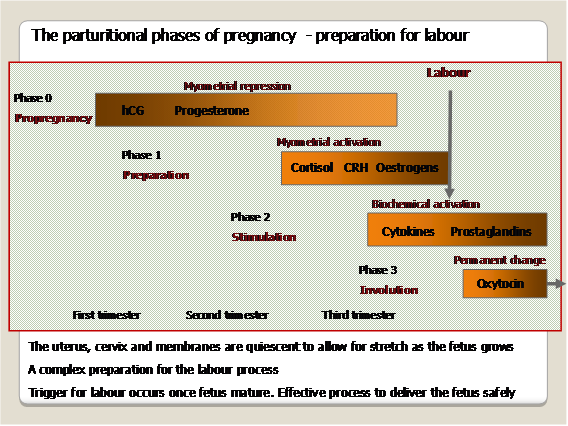Preparation for Labour
| During pregnancy hormonal changes gradually start to prepare the woman's body for labour. The uterus, cervix and membranes are quiescent to allow for stretch as the fetus grows. Have a look at the diagram below which outlines the phases of pregnancy including the preparation for labour. |
 |
This quiescence is withdrawn once labour commences. This complex process is not completely understood but appears to be initiated by fetal maturation. The net result is that uterine contractions become more frequent and painful as labour approaches. Successful labour requires the uterus to contract, the cervix to open and the baby to descend through the pelvis. Labour then is defined as painful regular contractions leading to cervical effacement and dilatation.
Usually the waters break spontaneously (spontaneous rupture of membranes or SROM) during labour, but sometimes they break well before labour commences (pre-labour rupture of membranes or PROM). Sometimes the waters are ruptured artificially with a small plastic hook (artificial rupture of membranes or ARM). Occasionally a baby is even born with membranes still intact – called being born in the caul or “en caul”.



